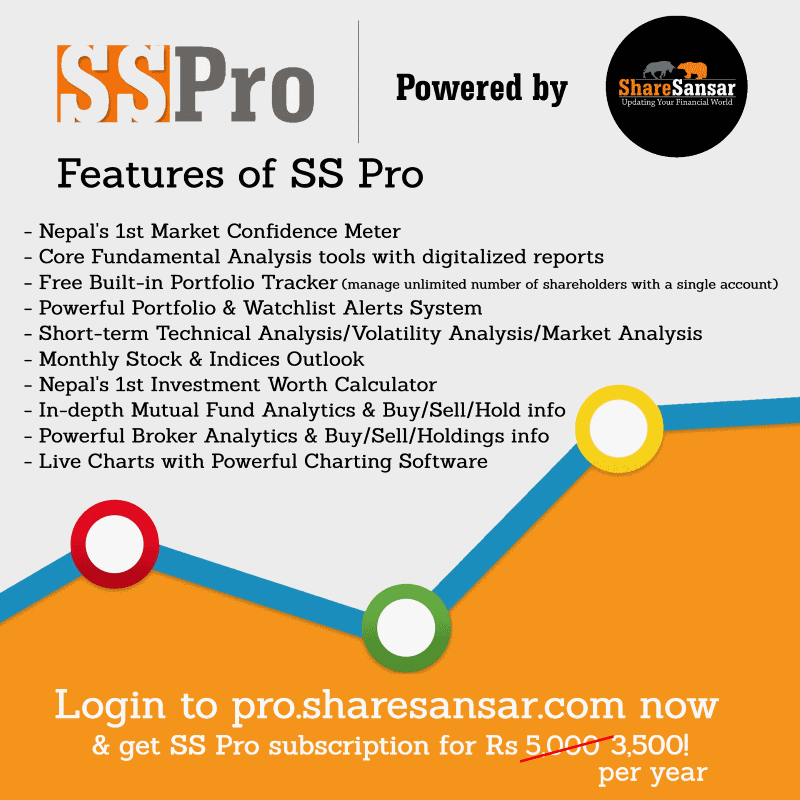A Beginners guide for novice investors -5; Know why most of the value investors use P/E ratio to select stocks


Most of the investors who are concerned about companies’ financial statements are always eager to watch the key ratios in the statement. There is always a confusion in the beginner investors who are trying to enter the market that what really does Price to Earnings(P/E) ratios determined. Today, we’ll be discussing the concept behind the P/E and how is it useful for the investors.
What is PRICE TO EARNING RATIO (P/E)?
Let’s first describe what the term P/E elucidates? In a layman language, price to earnings ratio shows how much an investor is willing to pay for a share in a company. Investopedia has described this term as the ratio for valuing a company that measures its current share price relative to its per-share earnings (EPS). It is a premium paid by investors over its earning.
Price to earnings ratio is derived by dividing the current share price by earning per share. Well, we don’t need to panic how to calculate; the company's financial statement provides us a ready meal, we just need to consume it. There might be another question why does anyone want to pay the premium price?
What P/E ratio shows?
Essentially a P/E ratio reflects the earning potential of a company in the eyes of investors. It is also an expectation of investors where the company growth will be in the future. It is one of the most interesting ratios used to compare the price and the value of a particular stock. Higher the P/E ratio, the more premium is the stock and vice versa but it doesn’t necessarily mean the stock is expensive. It simply indicates the investor's willingness to pay a premium to hold the stock.
Okay, let me simplify this with our daily life situation. Suppose you went to grocery shop to buy some onions and you were intending to buy 1 kg at a market price of 45 per kg. You asked the shopkeeper a price, but it has already increased to Rs 50. In the meantime, you heard some other customers discussing that the price of onion might reach up to Rs 70 per kg. Even you think of some other conditions which might push the price to that level. Now, you decide to take a whole 20 kg bag and hold it so in future if price hike you don’t need to pay more. This was just a simple explanation of why someone wants to pay a premium. The same scenario applies to the stock market. If an investor can see the future superior growth and potential, effective business models with effective utilization of assets, and stable and visible profitability of the company, he/ she is happy to pay the premium. This leads the price of that stock to rise making it overvalued.
Should we prefer high or a low P/E ratio:
The low P/E ratio indicates a lack of visibility of the earnings of a company and low potential or degrowth prospects of the company. So, what is the acceptable P/E ratio? Higher might make the stock riskier as the price is overvalued whereas lower might not give desirable return to the investors.
Usually, a stock’s P/E ratio should move in line with its own industry and global peers. It also usually moves in a rangebound fashion to its own historical PE multipliers. If there is a major divergence from its industrial P/E we need to do some more investigation. We calculate the industry PE ratio by dividing the current market price of sector index by earnings per share of stocks comprising of the index. Especially, tech companies that grow faster than average typically have a higher P/E ratio.
There is no thumb rule to determine the exact number to consider good or bad PE ratio but arguable P/E of five or less is not a remarkable bargain. A very high PE is not necessarily a warning sign that expectations have become too high. If the company can meet the expectation of investors than their price can hike more further even the PE is high. So, the effective way to use PE is by comparing it with its industrial average. Well, PE is a good indicator to take a decision for investing but it should be aligned with other ratios and information in a financial statement.
All else being equal, a share price drop should make a stock more attractive to potential investors. In the long term, share price tends to follow earning per share, but in the short-term prices bounce around in response to short term factors. So, the market correction or deep can be an opportunity to pick the best stock at a bargain price.
Continue……….Stay Updated with NepseKhabar








